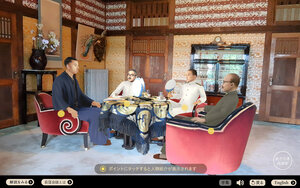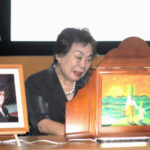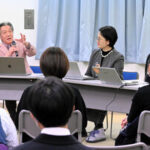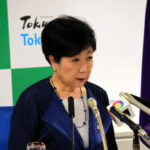The “Ogikubo Conference,” which became one of the triggers for Japan’s expansion of the front, was held at the private residence of the then Prime Minister, “Ogiso” (in ). Ogiso, which is now open to the public, holds what meaning in the history of the war and what does it convey to the present? We asked Professor Akira Yamada (Modern Japanese History) from the Faculty of Literature.
Working towards the conclusion of the Tripartite Pact and struggling with reconciliation
The Ogikubo Conference took place on July 19, 1940, shortly after the decision to form the second Konoe Cabinet. Despite being before the cabinet formation, it was an unusual discussion that summoned the three individuals slated for Army Minister, Navy Minister, and Foreign Minister: , Yoshida Zengo, and Matsuoka Yōsuke.
Konoe’s aim was to confirm the positions of the Army and Navy regarding the proposed Tripartite Pact between Japan, Germany, and Italy. I believe he wanted to avoid a repeat of the situation, as one of the reasons for the collapse of the first Konoe Cabinet (June 1937 to January 1939) was the conflict between the two. The previous cabinet, that of Mitsumasa Yonai, was also forced to resign due to clashes between Yonai, a Navy Admiral and opponent of the pact, and the pro-pact Army.
Ogikubo Conference
I am not familiar with a cultural or historical site called the “Ogikubo Conference.” It is possible this term refers to a specific event or meeting rather than a permanent place. To provide an accurate summary, I would need more context about what this conference was.
Ogiso
Ogiso is a historical title referring to the legendary first dynasty of rulers in the Benin Kingdom, located in present-day Nigeria. According to oral tradition, the Ogiso dynasty, which means “Kings of the Sky,” ruled for many generations before being succeeded by the Oba dynasty around the 13th century. This period is foundational to Benin’s early history and cultural identity.
Tripartite Pact
The Tripartite Pact was a defensive military alliance signed in Berlin on September 27, 1940, which formally established the Axis powers of World War II. Its primary signatories were Germany, Italy, and Japan, who agreed to provide mutual assistance if any one of them was attacked by a nation not already involved in the war.
Konoe Cabinet
The Konoe Cabinet refers to the Japanese government led by Prince Fumimaro Konoe, which was formed three times between 1937 and 1941. It is historically significant for its role in escalating Japan’s war with China and forging the Tripartite Pact with Nazi Germany and Fascist Italy, aligning Japan with the Axis powers. The cabinet’s policies ultimately set the nation on a path toward direct involvement in World War II.
Yoshida Zengo
I am unable to identify a specific place or cultural site named “Yoshida Zengo.” This name may refer to a person, a business, or a lesser-known local site. For an accurate summary, please verify the name or provide additional context, such as its location.
Matsuoka Yōsuke
Matsuoka Yōsuke is not a place or cultural site, but a historical figure. He was a Japanese diplomat and politician who served as Foreign Minister in the 1930s-40s and is most famous for leading Japan out of the League of Nations.
Mitsumasa Yonai
Mitsumasa Yonai was not a place or cultural site, but a Japanese naval officer and politician. He served as the Prime Minister of Japan in 1940 and later as the Navy Minister during the final cabinet of World War II. He is historically significant for his early opposition to war with the United States and for his role in the surrender process.






